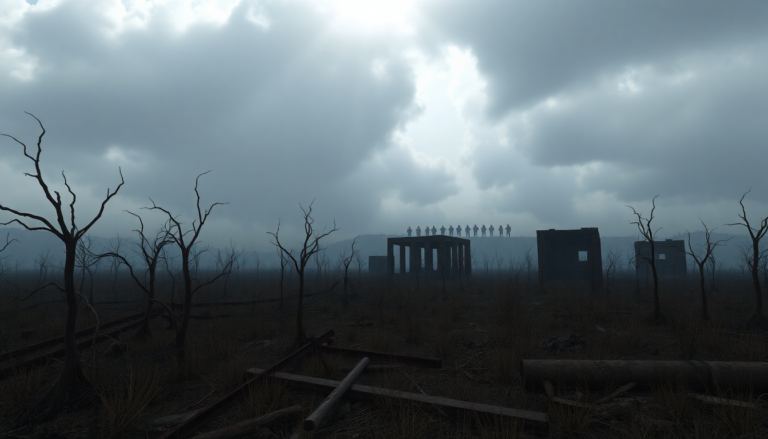Argomenti trattati
Imagine a world where the very earth beneath your feet is steeped in decay, where the air is thick with the scent of rot, and the only companions you have are the undead. This is the universe that Blight: Survival invites players into—a place where survival is not just a goal but a daily battle against despair. I remember the first time I saw the gameplay reveal trailer back in 2022; it felt like stepping into a nightmare where survival depended on cunning and stealth.
The haunting lore of Blight: Survival
Set in an alternate 14th century, Blight: Survival paints a picture of a society ravaged by a zombie plague. The game captures the essence of a world collapsing under its weight of despair, where banditry runs rampant and entire villages are reduced to ashes. The latest glimpse into the game, focusing on the Marshlands biome, reveals a land marred by suffering and transformation. The in-game description describes a once-quiet area that has become a brutal reminder of humanity’s greed and its consequences. It’s a narrative that feels both familiar and eerily unique.
The Marshlands are described as “never peaceful,” and it’s hard to argue with that sentiment. As players navigate through this desolate landscape, they will encounter grotesque sights—corpses dangling from trees, crows feasting on the fallen, and the remnants of a civilization that has forgotten its roots. It evokes a feeling of hopelessness that mirrors the plight of its inhabitants, making every moment in the game a poignant reminder of what has been lost. And honestly, that’s what makes the game so compelling—it’s not just about surviving; it’s about understanding a world that has been irrevocably changed.
Gameplay features that excite
What truly sets Blight: Survival apart is its gameplay mechanics. Designed primarily as a PvE experience, it allows players to engage in cooperative play or even tackle challenges solo. The emphasis on stealth and archery adds a layer of strategy that feels refreshing in a genre often dominated by brute force. Personally, I can’t wait to sneak through the shadows, waiting for the perfect moment to put an arrow through a zombie’s eye—there’s something thrilling about the thought of using skill over sheer strength in a world filled with horrors.
Moreover, the game’s structure supports up to four players, fostering a sense of camaraderie in an otherwise desolate world. From what I’ve gathered, the developers are keen on creating a rich narrative experience that encourages teamwork and strategic planning. As many know, nothing beats the thrill of coordinating with friends while navigating treacherous terrain and facing off against the undead. But, let’s not forget the eerie vibe that permeates every corner of the game, amplifying the horror elements and keeping players on their toes.
The future of Blight: Survival
While there’s no official release date yet, the anticipation surrounding Blight: Survival is palpable. With plans to incorporate traditional monetization strategies and downloadable content, it’s clear the developers are aiming for longevity in the gaming community. As the landscape of gaming continues to evolve, it’s exciting to think about how Blight: Survival will position itself within the market. It’s a game that promises not only to entertain but also to challenge players’ perceptions of survival horror.
Reflecting on the journey of Blight: Survival, I can’t help but feel a mix of excitement and trepidation. The world they’ve created is a stark reminder of what can happen when humanity disregards the balance of nature. I find myself wondering—will players emerge from this experience unscathed, or will they too become part of the story’s grim tapestry? Only time will tell, but until then, I’ll be eagerly awaiting every update from the development team.

